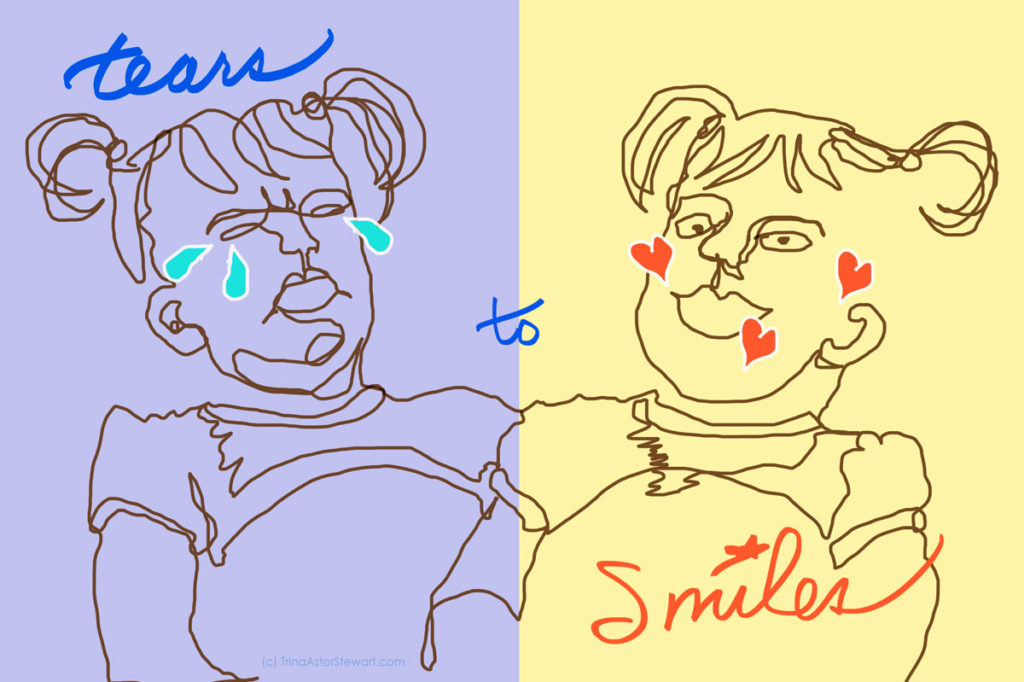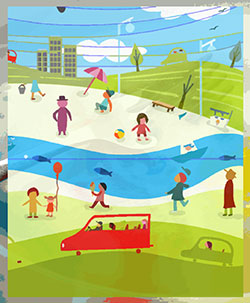The “Terrible Twos” is a childhood development stage that comes with questions on coping with inevitable Temper Tantrums. Here is some advice from personal experience and new findings by Katie D. Rosanbalm, a Senior Research Scientist from Duke Center for Child and Family Policy.
As parents, we sometimes receive dire warnings long before this stage of development. You may be wondering what the right approach could be. Mothers, grandmothers, aunts, and friends try to offer sage advice. Some of this advice is priceless. Fortunately, I was advised by one of my aunts, which meant I only had one or two temper tantrums per child, not the repeated onslaught that some parents have had.
These tantrums were no less daunting occurrences that come about at the most inconvenient times. Each one caused me to stop right there in my tracks. In one instance, this occurred right in the middle of a parking lot during an ice storm. I was on a mission to get a prescription filled at the pharmacy. But I had to think quickly before acting. I couldn’t just wait it out; he was in danger, letting go of my hand and thrashing it out on the ice. So I quickly reached down, picked him up, and carried him into the store. Fortunately, the distractions in the store and my talking to him calmly had the desired effect.
Some years ago, the advice I was given was pearls of wisdom handed down and now born out as the right thing to do by professionals like Katie D. Rosanbalm. You may need professional help dealing with the terrible twos in some circumstances, but that is after you have tried everything. Remember, just when you think you could be at your wit’s end, it can end as quickly as it began.
You can turn tears into smiles… Every child is different, be patient with them and yourself.
Always remember my mother’s favorite advice. “All they need is more love!”
Temper tantrums are not always just about trying to get their own way. They may be an indication they may need some more loving attention. We parents have so many things to be concerned about that it is possible to be less attentive than we want to be.

Temper tantrums can begin when a child is two years old and sometimes last well into the third year. They are a natural childhood development. My aunt told me, “This is a gift for parents and a necessary learning process for children. Nothing to be afraid of; you just need to be prepared.”
Remember, your child has a tantrum because they have feelings they don’t understand how to express. Their emotions and coping mechanisms are undeveloped. The only way they know how to communicate is through tears which has been successful up until now. When children feel overly frustrated trying to communicate, their resulting actions often bring only more misunderstanding from parents. Just as you had to help your child self-soothe themselves to sleep, they must now learn to manage their emotions, develop self-coping skills, and learn better communication methods.
You love your child! What your child learns at this stage will help them evaluate situations in the future. It increases levels of emotional stability and feelings of security. A tall order? Yes, but you are up to it.
It is good to ensure that temporary caregivers understand how to deal with temper tantrums because a tantrum can happen when you least expect it.
From a parent’s perspective, when you manage temper tantrums effectively, you are not only helping your child’s development, you are helping yourself. Believe it or not, what happens can make your child’s teenage years easier on you.
As my aunt said, “If you don’t get a hold of the temper tantrum, it may be harder to discipline your child later on.”
Here are some books you may enjoy.
- All About Raising Children, by Helen B Andelin (Author), Dixie Andelin Forsyth (Editor)
- Hunt, Gather, Parent – What Ancient Cultures Can Teach Us About the Lost Art of Raising Happy, Helpful Little Humans, by Michaeleen Doucleff.
- Butterfly Baby -Meets Mr. and Mrs. Toad at Siler Forest Pond, by Trina Astor-Stewart
Children learn consistency, self-reliance, and how to cope with delayed gratification. Children learn to accept that when you say, “No, you mean no.” They learn to trust you when you insist on certain behavior that will keep them safe. The boundaries you set help them understand how to set boundaries for themselves in the future. Through these little lessons, they build character and learn to protect themselves as older children when you may not be there to protect them.
As children understand the meaning of what you say, they learn how to express themselves little by little and communicate with words rather than tears and anger. In the long run, it is essential to encourage your child to communicate with you. Listening can head off tears of frustration and set a tone for the growing-up years.
According to Katie Rosanbalm’s research, when you let your child know you are there for them and listening, you are on the way to better two-way communication. Often tantrums are caused by a need to express fear. “Once the child subconsciously realizes there’s no danger, tantrums fizzle out. “she says.
This could be what happened to my son, who I mentioned earlier was having a temper tantrum. Or was it perhaps a panic attack? Was he afraid as we left the security of the car to walk into the pharmacy? Almost the moment I picked him up, he started to settle down.
Sometimes it is a matter of being lovingly firm. Sometimes it is not reacting to the tantrum. If the child finds they are not getting the desired response, they calm down and try some other form of communication. At that moment, it is essential to reinforce acceptable behavior. It is not giving in but rewarding good behavior.
During a horrible tantrum meltdown, a part of your child’s brain rages with frustration. They are unable to deal with a situation as an older child would. As a loving parent, you must not be upset or interfere with the immediate issue but learn to wait it out. Children copy you; showing them a calm demeanor teaches them to be calmer.
Listening, you can speak lovingly, suggesting ways to solve the problem. Children soak up things like a sponge, learning rapidly at this stage and building memory and self-confidence. A nurturing environment provides the building blocks for a lifetime of good living.
So worry not, be calm, you can do this!
Smiles are sweetest after the rain.


for mentions of creative people, books, products, or businesses mentioned in this post. The Book Butterfly Baby is by the author.



